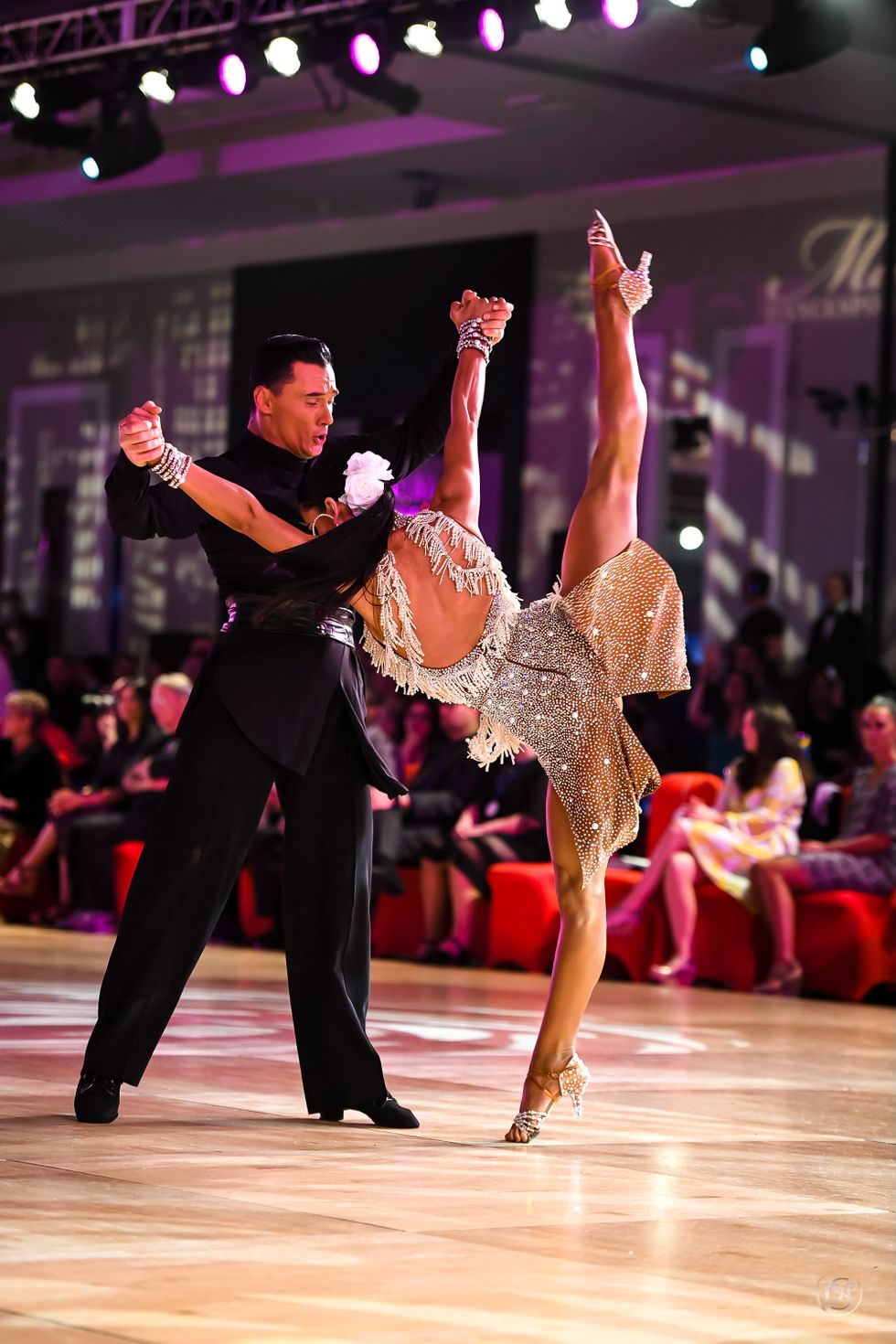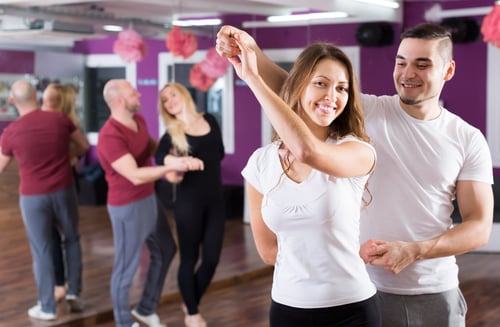Ah, Ballroom Dance, the real contact sport.
The field of sports psychology has been fascinated by teamwork and communication related to success within team sports. While few studies have translated these strategies into the realm of ballroom dancing, we find that the same application can be seamlessly integrated to dance partnerships and teams, including instructors and coaches, visiting teachers, and examiners. Keep reading to increase your understanding of teamwork and communication, for more consistent goal setting, effective collaboration, and better attitudes from all!
Teamwork Makes the Dream Work
Coordination is an essential component of ballroom dance within the grand perspective of dance training. Partnerships must coordinate goal setting, practice times, competition calendars, and on a more granular level, consistent physical coordination which supports improved leading and following. According to Eccles and Tran in 2012, a "key challenge for sports teams is achieving team coordination…[so that when the partnership is] combined, they are in suitable relation for effective team functioning. A prerequisite to achieving team coordination is effective communication between team members, including coaches, about game plans and the roles and responsibilities of team members."
Communication is the first step in the development of effective partnering strategies. Communication is an active process, dance partners must "coexist in a meaningful way" (Venter, 2019). So what does it really mean to communicate with your dance partner? Here are some ways that you may communicate on a daily basis, or even some options on how to integrate communication strategies into your practice!
- Communication occurs dynamically within dancing - sometimes this is literally choreographed in!
-
- In a delayed back break in Rumba, the follower waits for the initiation of the lead and then takes their time to complete the movement, letting the leader know they are ready to move to the next step.
- In pivoting actions, leader and follower take turns powering the movement.
-
- Practice Planning: one partner could be in charge of running the music, and one partner could be in charge of finding a new figure to learn. This could switch off so that everyone has an opportunity to contribute!
- Lessons: both partners can work together to prepare topics of interest to guide lessons with teachers, as well as present questions so that instructors have guidance on what to work on throughout the lesson!

Stay Away from the Blame Game
Psychologist and Professional American Smooth Champion, Anna Shabazayan, shares her unique perspective on communication as she has integrated both dance and psychology into her work. "If short and summarized, I'd say the biggest issue in partnerships is communication (better yet, the lack of it) and the need to blame. I don't mean the mere action of communication but rather how it is done or better yet, whether it is done. One of my favorite quotes is George Bernard Shaw's saying that ‘the biggest problem in communication is the illusion that it has taken place.’ This is true in all forms of partnerships. This assumption causes more undesired consequences and dissatisfaction with the work process in a team, leading to unnecessary tension."
Blaming can be a default action of human nature—it takes effort to point fingers but more tremendous effort to turn the finger back around towards yourself. Before blaming your partner, ask yourself what you can contribute towards a solution. Have you clearly communicated to your partner what you're seeking to attain? How does this action contribute to one of the overall goals within your partnership?
Understanding Your Goals
It is essential to have personal and team goals established. When a partnership knows that they are working towards Medal tests, placing in the final at a competition, or preparing a new show dance, it is easier to make collaborative, team-based decisions when everyone is on board with the same vision. We encourage partnerships to sit down, plan out goals with your teachers and wider team, and further organize these into small steps (process goals) and more extensive achievements (outcome goals). Organization of goals into decisive steps leads to tremendous success as a team; according to Burton and Weiss, "The fundamental goal concept that emphasizes process and performance over outcome goals plays the biggest role in determining goal-setting effectiveness in sports."
When Communication Becomes Awkward
We'll be the first to admit that speaking up can be challenging, and even uncomfortable! While bringing up differing opinions could be awkward, we encourage you to take a deep breath and understand that your partner has been there, too! Communication and collaboration are not confrontations—you have the right to share your opinion. The best part about moving past the awkward beginnings of communication is opening the gates to improved communication strategies in the future.
Open Ears, Open Mind
It can be challenging to see perspectives outside of your own, especially when dealing with something you are passionate about, something that means a lot to you…like dance! Anna explains, "the first step towards creating good communication within a partnership has to be putting aside personal protective weapons and being open-minded”.
Anna further suggested concrete ways to encourage partnerships to appreciate new perspectives and be more open-minded within their communication strategies, "to help with this process, the easiest step which could be taken is getting to know your partner! Get to know who they are and how they work outside of physical practice! Understand partners' learning styles. No matter how much we like to generalize situations and concepts, one formula doesn't fit all. And in this journey of getting to know your partner, don't forget the most important: listen to them, be an active listener."
References
Eccles, D. W., & Tran, K. B. (2012). Getting them on the same page: Strategies for enhancing coordination and communication in sports teams. Journal of Sport Psychology in Action, 3(1), 30-40.
Venter, E. (2019). Challenges for meaningful interpersonal communication in a digital era. HTS: Theological Studies, 75(1), 1-6.
Burton, D., & Weiss, C. (2008). The fundamental goal con- cept: The path to process and performance success. In T. S. Horn (Ed.), Advances in sport psychology (3rd ed., pp. 339–375). Champaign, IL: Human Kinetics.



